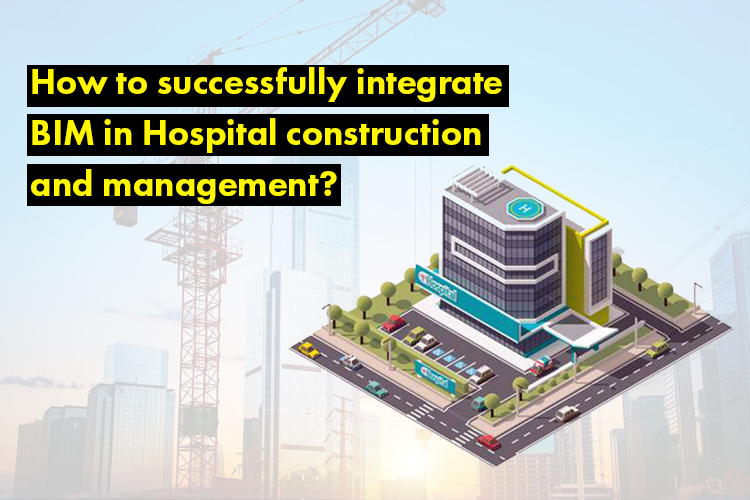How to successfully integrate BIM in Hospital construction and management?

COVID-19 has exponentially increased the demand of healthcare services. In fact, at the peak of the pandemic city hospitals across the world were flooded with concerned residents and the pharmacies were running out of medicines. Here, it became apparent that there was a need for more hospitals as well as a need to better manage the current hospitals in a way that it could effectively cater to COVID-19 patients along will patients from other ailments.
The healthcare construction sector has been working at a rapid pace to meet the rising demand of treatment centers, testing labs, quarantine centers etc. At the core of this lies BIM, its various advantages aiding fast construction as well as facility management of hospitals.
What are the challenges faced in construction of hospitals during COVID-19?
Construction of health care facilities comes with its own challenges. Hospitals need to be constructed fast while dealing with difficulties of labour and material shortage, poor collaboration, project overruns etc. Construction sector has also been plagued with the challenge of maintain social distancing and ensuring the safety of the workers.
Below we look at how BIM Services can augment the construction and management of hospitals:
1. BIM for Regulatory Approvals:
Hospital Buildings need to get certain regulatory approvals by the governments bodies. It must follow certain health codes and standards which ensure the safety of the patients as well as the healthcare workers. There are also several types of diagnostic, testing and treatment requirements to consider before any hospital can be constructed. BIM can be used to present the design to the regulatory board with clarity. 3D rendering Services can merge design and aesthetics to show hospital equipment layout, room layout etc.
2. BIM for Optimal Hospital Design:
Planning of hospitals is very important as there are many considerations the designer or the architect must keep in mind. The hospital must be designed in a manner that is free of any harmful potentially allergic materials, should provide clean and filtered air and should facilitate a therapeutic environment with easy access to the outside world. The hospital must also be wheelchair accessible, the lighting, heat and ventilation in the ER (emergency room) and ICU units must be controlled etc. With COVID-19 now the hospitals designs must also ensure that there are social distancing measures in place specially to ensure that COVID-19 patients don’t have any contact especially with people who have pre-existing medical issues.
BIM allows to incorporate accurate room dimensions, placement of healthcare devices, material specifications, energy calculations, lighting systems, walking areas etc. into the 3D design. With BIM right from the planning stage the focus can be on creating an environment which is therapeutic and safe for the patients and healthcare workers.
3. BIM for Increasing Construction Speed:
The biggest need currently is to build faster and cheaper healthcare facilities and BIM is best positioned to do it. With BIM, Clash Detection can take place at an early design phase which reduces rework and saves time. The Virtual 3D model also enhances collaboration between cross function teams, allowing them to share data in a more effective and faster manner. BIM models are also easy to modify and allow for accurate scheduling ultimately reducing the time and waste and increasing the profit margin.
4. BIM for Facility Management:
Once the hospital is constructed the next step comes in maintaining it. Many times in bigger hospitals the building can be scanned after construction to capture the as-built building condition and the resulting point cloud data can be used to update the BIM Model. Moreover, in those buildings where there is no as-built documentations Point Cloud to BIM Services can be used to laser scan the buildings and create BIM models from that. An updated BIM model is paramount in ensuring smooth functioning of the hospital. By knowing where each component is located any repairs can easily be done. These models are also information rich providing information like accurate installation timeframes of all the healthcare systems under warranty, serial numbers, manufacturer’s details etc. all of which aids in maintaining the hospital building.
Conclusion:
So, in conclusion BIM in health-care aids in establishing a more strategic and multi-faceted decision-making process. By implementing BIM in hospital construction process right from the start AEC firms can gain a positive return on their investment.